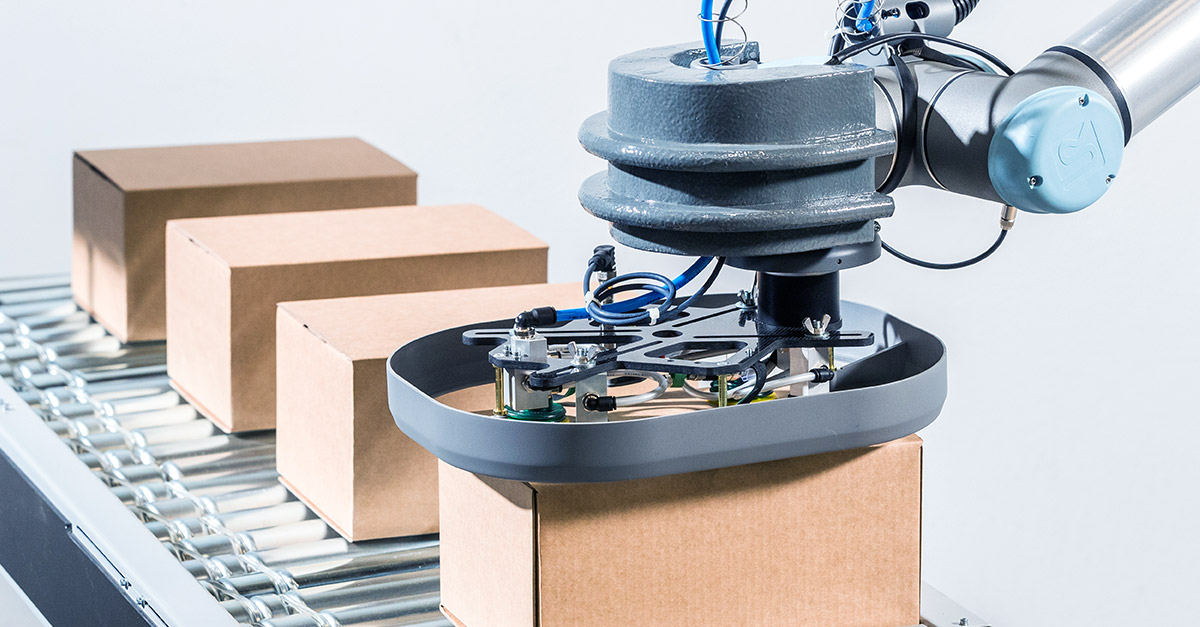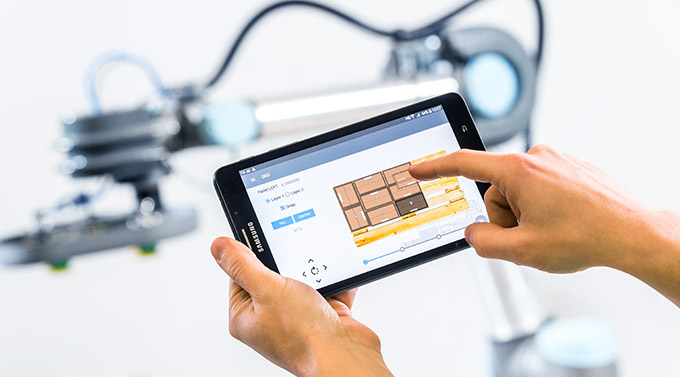
How about having a colleague that you know won’t steal your lunch or occupy the restroom? Words associated with robots used to be expensive, complicated and scary, but not anymore. In recent years, a new generation of robots has evolved, called cobots.
Cobot – takes over simple tasks and enables staff development
 Cobot is another word for a collaborative robot. The cobot is a major innovation and has the potential of being the manufacturing industry’s’ next big thing. One of its main intentions is not to be a threat to employees by taking their jobs. It is supposed to be a new colleague that assists production staff instead of replacing them. The ambition is that the cobot will take over simple and tedious tasks that are time consuming and backbreaking. In that way, it will release human staff so they can evolve and learn other tasks, and continue their development in the production chain. Therefore, the aim is to use the cobot for basic operations, such as pick and place components. Since the cobot is versatile it can also perform more advanced tasks, such as palletizing.
Cobot is another word for a collaborative robot. The cobot is a major innovation and has the potential of being the manufacturing industry’s’ next big thing. One of its main intentions is not to be a threat to employees by taking their jobs. It is supposed to be a new colleague that assists production staff instead of replacing them. The ambition is that the cobot will take over simple and tedious tasks that are time consuming and backbreaking. In that way, it will release human staff so they can evolve and learn other tasks, and continue their development in the production chain. Therefore, the aim is to use the cobot for basic operations, such as pick and place components. Since the cobot is versatile it can also perform more advanced tasks, such as palletizing.
Built-in sensor make the cobot sense a person’s presence and location
A cobot often operates at low load and speed without safety guarding, unlike many other robots. It intends to physically interact with people, in a shared workspace, since the cobot is designed to be safe for people around it. It possesses a very sensitive overload stop which immediately stops a motion if it touches an obstacle. This is to avoid potential danger or injury. The built-in sensor makes the cobot not only sense when there is a person near, but also the person’s location. This allows the cobot to slow down, work around the person or stop if the situation requires it. When the person moves away, it resumes its work again.
The application determines safety requirements – not the cobot itself
 If the cobot is going to interact with staff without safety guarding, it limits the maximum load and speed that the cobot can handle. A cobot making contact with a human when moving heavy equipment at high speed, may risk hurting the person. Therefore, it is the application the cobot is working with that determines the safety requirements, not the cobot itself. Even a fairly safe cobot will need caging if it is working with dangerous loads like sharp knives. Even if it needs caging, thanks to modern sensors, the cage can be small. In that way, valuable floor space can be released which allows the employees to work more closely to them.
If the cobot is going to interact with staff without safety guarding, it limits the maximum load and speed that the cobot can handle. A cobot making contact with a human when moving heavy equipment at high speed, may risk hurting the person. Therefore, it is the application the cobot is working with that determines the safety requirements, not the cobot itself. Even a fairly safe cobot will need caging if it is working with dangerous loads like sharp knives. Even if it needs caging, thanks to modern sensors, the cage can be small. In that way, valuable floor space can be released which allows the employees to work more closely to them.
The cobot is easy to install which generates low costs without compromising on operator safety
 The cobot is relatively lightweight and can be moved from task to task if necessary. Another advantage is that programming is very simple and do not require any special skills from the programmer. Anyone who can use a smartphone or a tablet can also program a cobot. Another aspect that speaks in the cobot’s favor is that it is relatively cheap compared to other robotic solutions. They are easy to use and operate, which keep the price down, compared to other alternatives. The cobot doesn’t necessarily need safety guards to keep it separated from humans on the production floor, as commonly seen with robots used in automotive production. By avoiding all safety enclosures, it contributes to a lower footprint while not compromising on operator safety.
The cobot is relatively lightweight and can be moved from task to task if necessary. Another advantage is that programming is very simple and do not require any special skills from the programmer. Anyone who can use a smartphone or a tablet can also program a cobot. Another aspect that speaks in the cobot’s favor is that it is relatively cheap compared to other robotic solutions. They are easy to use and operate, which keep the price down, compared to other alternatives. The cobot doesn’t necessarily need safety guards to keep it separated from humans on the production floor, as commonly seen with robots used in automotive production. By avoiding all safety enclosures, it contributes to a lower footprint while not compromising on operator safety.
I hope you found this article interesting. Would you like to know more about cobots or order a cobot solution from FlexLink? Please don’t hesitate to contact me or visit our website.




Great Article Klas ?
Thank you Wessam! Of course the article is the result of a teamwork, so there are more people behind. The opportunities that collaborative robots can bring are substantial, and besides the interaction with operators, it is evident they lower the automation investment threshold. Looking forward to a fruitful discussion to evolve.
Awesome product!